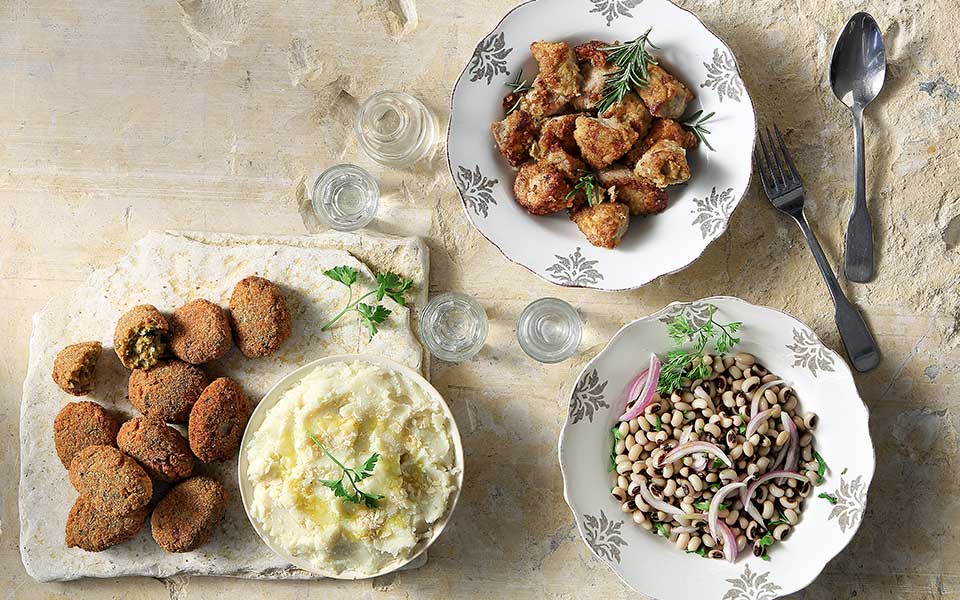On Kalymnos, you’ll find sun-dried bonito and other goodies from the sea, baked in the sun; enduring delicacies first introduced by the island’s sponge divers, who would catch fish when at sea and lay them out with a little sea salt to dry onboard. On Symi, they cook squid with a wild green known as loupevra, which grows on the islet of Hondros and is sweeter than the bitter stuff you find in other parts of Greece. On Rhodes, where the Italians had a positive influence on both cheese-making and wine-making, the locals are also obsessed with cumin, a flavor they picked up from the Turks.
Further south on Karpathos, the makarounes (a local pasta) of Olympos, made by hand with local flour and served with sautéed onions and myzithra cheese, are a mirror of the local economy: a mountainous island, Karpathos produces more farmers and shepherds than fishermen, and the island’s steep hills have been terraced to provide room to grow grain. On almost all of the islands, you’ll find a magical marriage between pulses and pasta, another vestige of Italian influence.
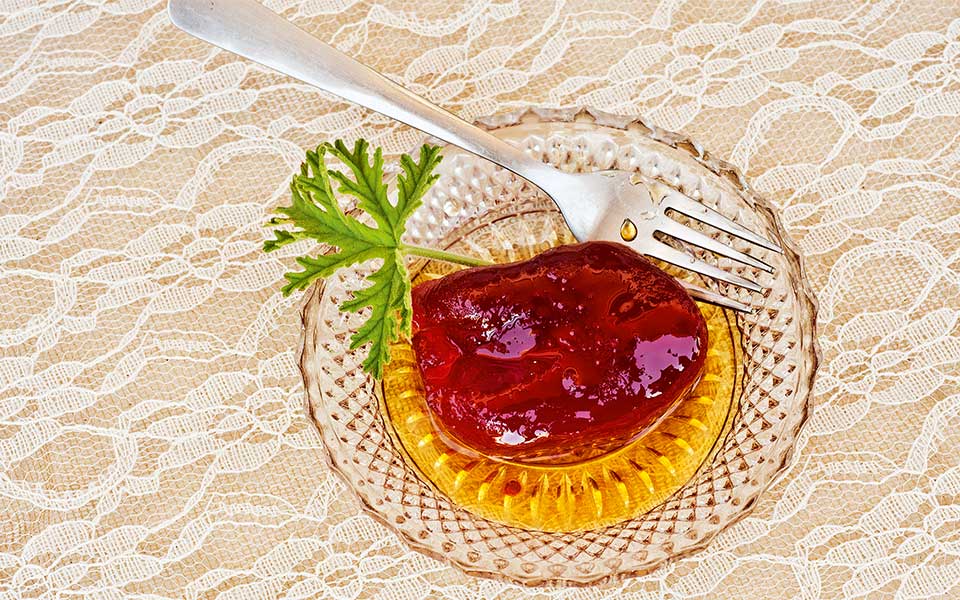
© Clairy Moustafellou
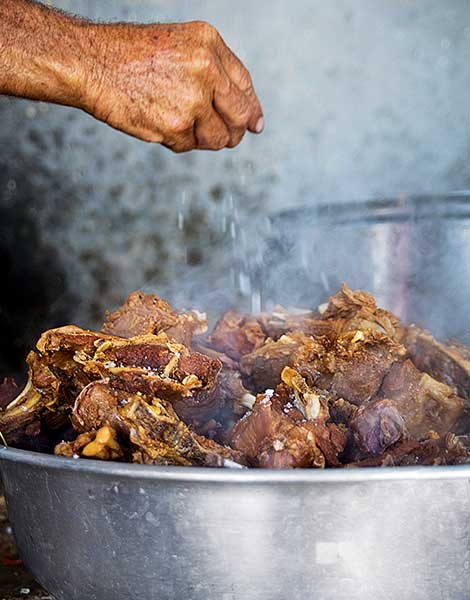
© Julia Klimi
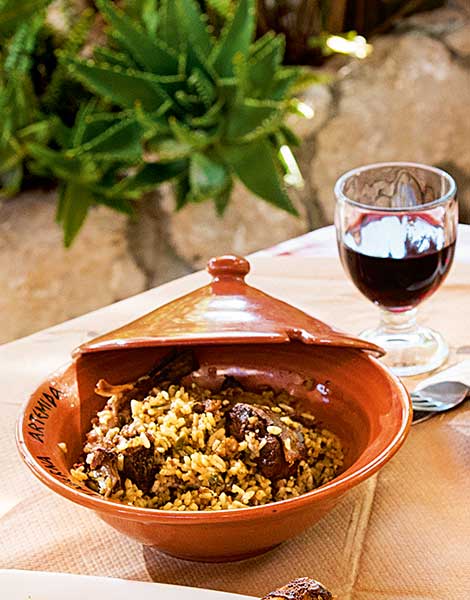
A number of factors contributed to the shaping of the cuisine of the Dodecanese, and many of these still have an impact on it today. For one thing, widespread piracy from the 12th to the early 16th centuries drove residents up into the hills, forcing them to turn their hand to farming and animal husbandry rather than to seek subsistence from the sea. The hot weather forced them to invent new ways of preserving food; for instance, spinialo, the meat of the grooved sea squirt (known locally as fouskes), is kept in containers full of seawater.
Trade, meanwhile, was boosted by the access to international markets that the Dodecanese islands (with the exception of Kos and Rhodes) were granted by their Ottoman rulers. On Leros, for example, we find guava, a tropical fruit originally imported from Egypt. The custom of fasting, a religious observance, was in part responsible for the tradition of pickling, in which huge jars were filled with vinegar-soaked vegetables, while poverty itself gave birth to all sorts of other clever culinary “solutions,” including the chickpea fritters of Rhodes, known as pitaroudia.
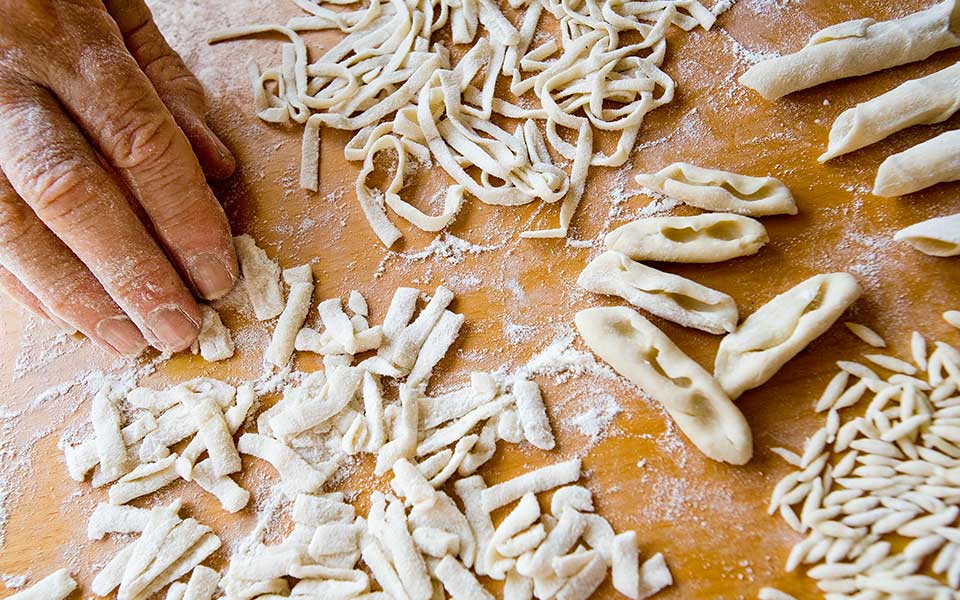
© Clairy Moustafellou
Naturally, the flora and fauna native to each island has also had a major impact on the cuisine. Astypalea has excellent saffron and delicious white sweet potatoes; Lipsi has the Fokiano grape, a wonderful variety that yields a sweet wine that once traveled all the way to the Vatican; and Symi has a local fruit called kroukouko that is gathered in the autumn and turned into jam, as well as finger-licking good shrimp. On Rhodes, locals make a delicious bread with mavragani flour and eat rich bean stews made with lopia, local beans capable of growing in arid soil. On Arki and Marathi, meanwhile, they gather capers from the surrounding islets and on Kasos they love their roikia, a type of dandelion green.
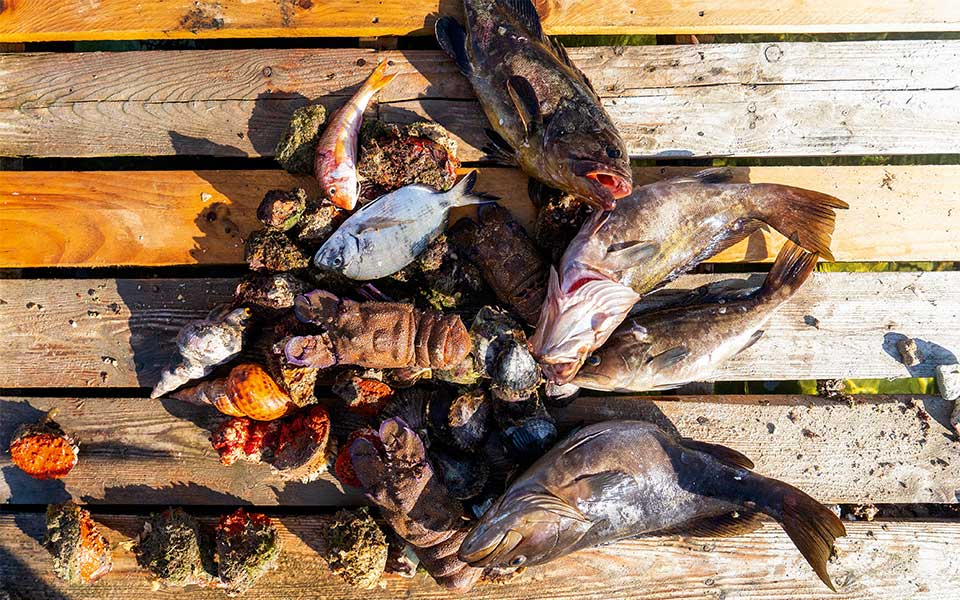
© Perikles Merakos
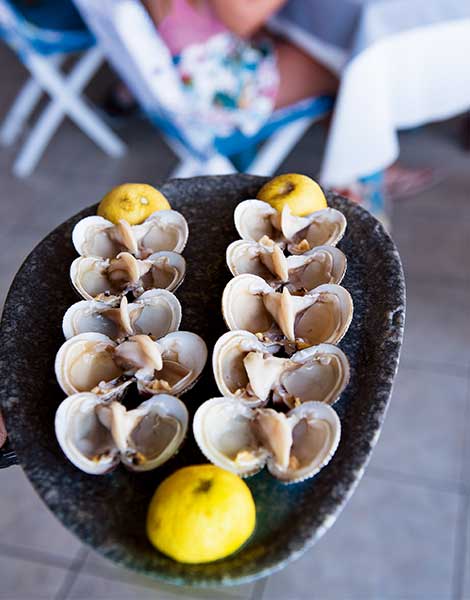
© Vangelis Zavos
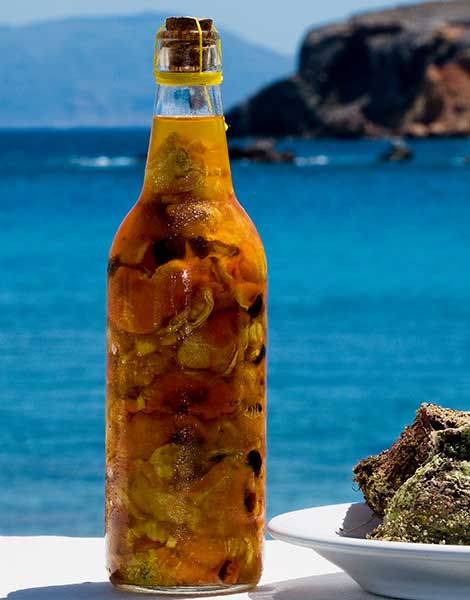
© Clairy Moustafellou
Wood-fired ovens
Thanks to significant livestock numbers and a more-than-sufficient supply of vegetables, pulses and olive oil – the oil from Rhodes enjoys protected geographical indication – the cuisine of the Dodecanese has an abundance of meat recipes and sundry side dishes. There was a time when these dishes would only be served on special occasions, but they have now become part of locals’ everyday lives.
On Rhodes, in the village of Apollona, which is surrounded by olive groves, they slow-roast goat in a wood-fired oven together with chickpeas and beans, serving it with potatoes and onions that have been cooked alongside the main dish in the same oven. At Easter on Kalymnos, a young goat, stuffed with liver, rice and herbs, is placed on a bed of dry vine twigs in a covered clay pot and baked. The pot, known as a mououri, is sealed with dough to protect the meat and once the fire is hot enough, the mouth of the wood-fired oven is also sealed to ensure that none of the heat or aromas escape. The practice of sealing up the communal village oven is a common one in this area, as is the recipe for stuffed goat. On Karpathos, the locals prefer to stuff lamb and call this dish vyzanti, while on the other islands of the Dodecanese, locals serve up lamb shanks in a traditional dish known as kapama.
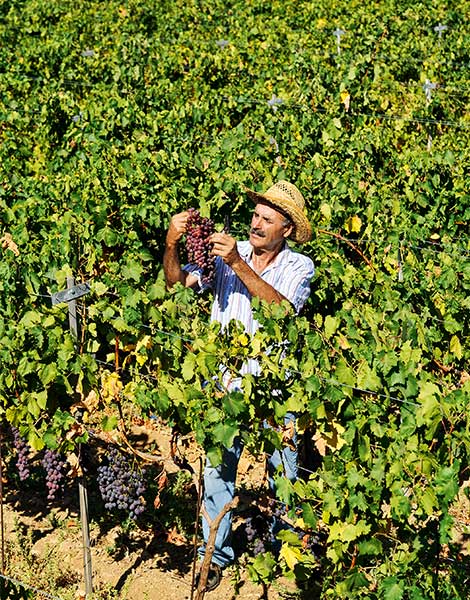
© Vangelis Zavos
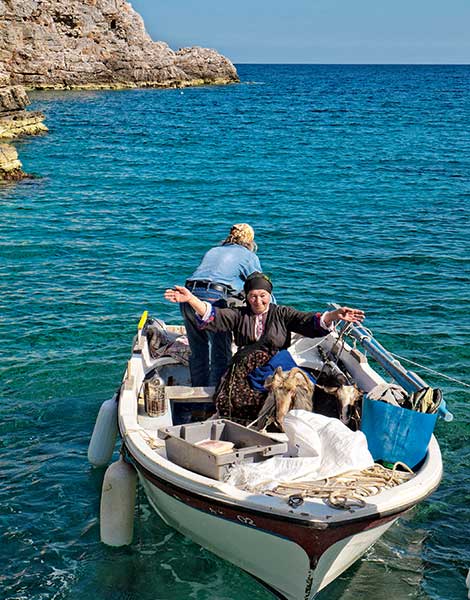
© Perikles Merakos
Pork is also an important part of the Dodecanese diet; it was not banned under Ottoman rule, even though it is forbidden for Muslims. In the past, families would kill a pig in October, carefully remove the hair using boiling water, and then make the entire animal last through the winter, cooking it in different ways. On Kos, for example, pork with bulgur wheat is renowned for its incredible flavor, mainly due to the lard that is cooked with the grain. On Nisyros next door, the locals have a similar dish called moukounies, which is pieces of pork cooked in its own fat and flavored with aromatic oregano. This is a pattern that is repeated on all the smaller islands in the area, the satellites to the main islands; they develop variations on all the basic recipes of their larger neighbors.
Kavourmas, a type of cured beef, used to be a staple in the lunch bag of Kalymnos’ sponge divers, eaten along with some dried bread. Today, however, beef kavourmas has disappeared from the local cuisine.
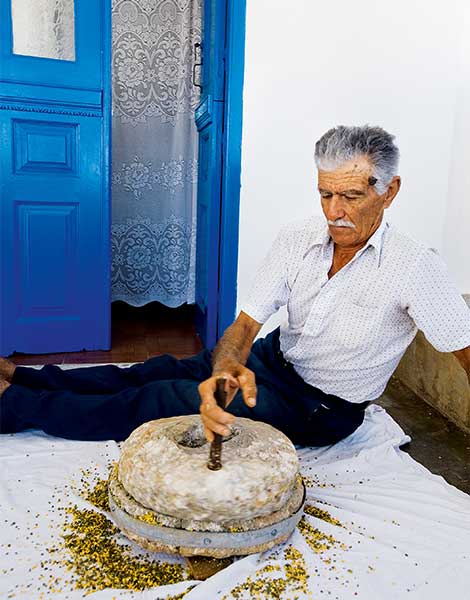
© Clairy Moustafellou
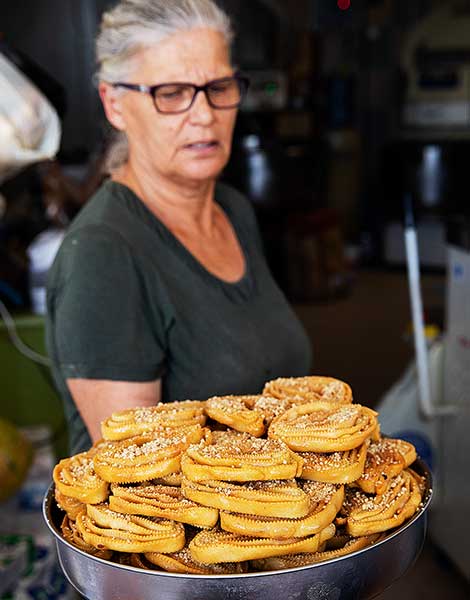
© Nicholas Mastoras
Innovation born of need
Widespread livestock farming has given rise, as is natural, to dairy production. Queen among these products is Kasos’ sitaka, a soft cheese made of goat’s and sheep’s milk; its origins date from the days when, with no way to store milk in the hot summer months, the meagre yield often soured before it could be consumed. Locals took this soured milk and, instead of throwing it away, heated it for long periods, stirring the liquid as it simmered, and eventually a cheese was formed in the cooking pot; this is how sitaka is made.
A similar technique – developed for the same reasons – yields the krasotyri (“wine cheese”) of Kos. This hard goat’s milk cheese is red on the outside because it is preserved in wine sediment.
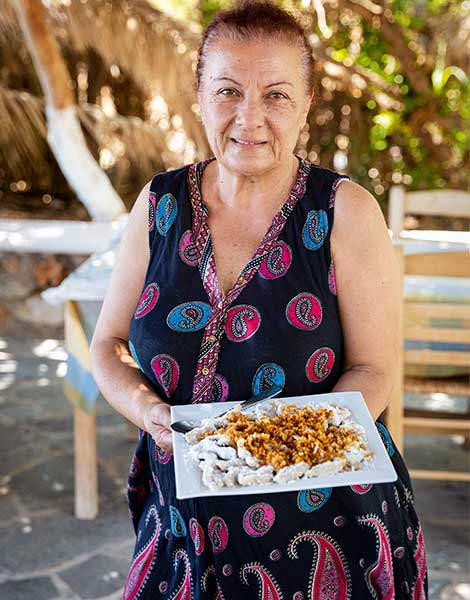
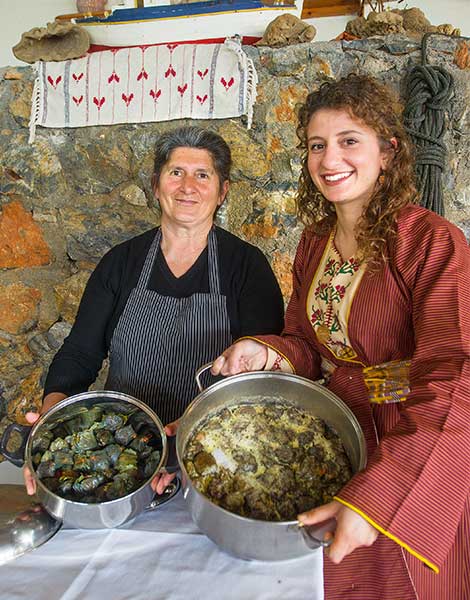
© Clairy Moustafellou
A desire not to waste soured milk is also the reason why you can’t find the sweet version of trachanas (a form of fermented grain) on Rhodes; the cracked wheat that makes up the main ingredient of this dish is boiled with week-old soured milk instead of the fresh variety that would produce sweeter results, and even though fresh milk is now freely available on the island, the traditional sour trachanas recipe hasn’t changed.
The locals’ ingenuity for making the most of nature’s bounty is not restricted to dairy products. The yaprakia of Symi – named after the Turkish word for food made with vine leaves – are made of cyclamen leaves stuffed with split-pea fava paste. On most of the islands, the locals will head out right after a spell of rain to collect snails. They also pickle samphire, and the buds and leaves of the caper bush; they steam pigweed and purslane; and they make their pasta without the luxury of using eggs. There’s more on hand, too, than wine to quench their thirst. Prickly pear liqueur is made on Symi, while on Rhodes, they use grapes to make the traditional spirit souma. There’s something that sounds similar, soumada, made on Nisyros, but it’s made from almonds, and it’s non-alcoholic. Soumada used to be made from locally grown almonds, but today most of those trees are gone, and so they have to import the beverage’s main ingredient.
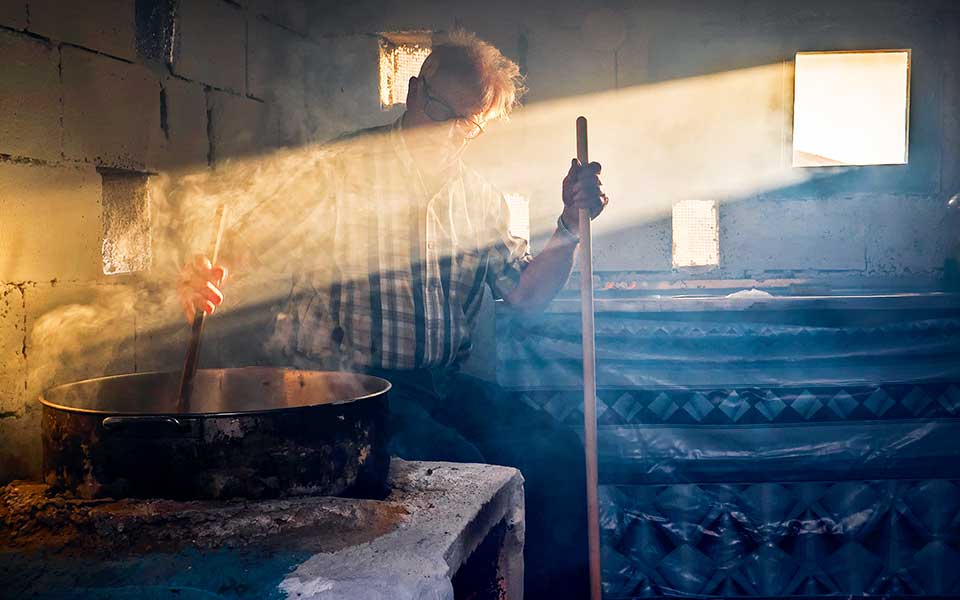
© Perikles Merakos
Precious seafood
The sponge divers of Kalymnos and Symi are responsible for some wonderful seafood dishes, created during long sea voyages that required innovative approaches to food sourcing and preservation. Among the many delicious meze that we owe to them are the dried and salted innards of parrot fish, a delicious creature abundant in local waters; sun-dried octopus smothered in pepper; sun-dried lobster tail – another favorite of the divers, who used the smaller lobster legs to flavor fish stews; shellfish, such as the grooved sea squirt, pickled in seawater; and squid ink fried in olive oil.
There are many more wonderful local seafood recipes that have been handed down over the years. In the village of Archangelos on Rhodes, for example, they marinate razorfish in a garlic paste for a whole day and then fry it. On Patmos, they specialize in fritters made from squid, octopus and calamari; on Kasos, they cook their octopus in wine with lots of spices; on Halki, they fry rabbit fish (which is said to have come into the area only after the Suez Canal was opened) and sprinkle it with local herbs; on Leros, they cook red mullet with raisins and rosemary; and on Karpathos, they serve flying squid with green beans and potatoes. On all the smaller islands with their delightful fishing grounds – Agathonisi, Kastelorizo, Pserimos, Telendos, Tilos and Arki – you’ll find fresh fish and other seafood prepared with local herbs and spices and cooked in a variety of different ways.
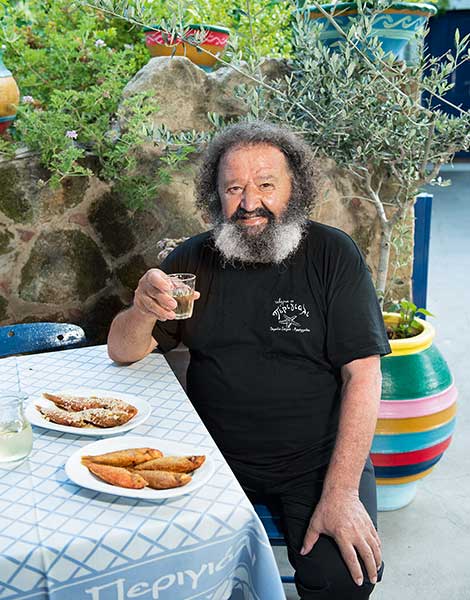
© Vangelis Zavos
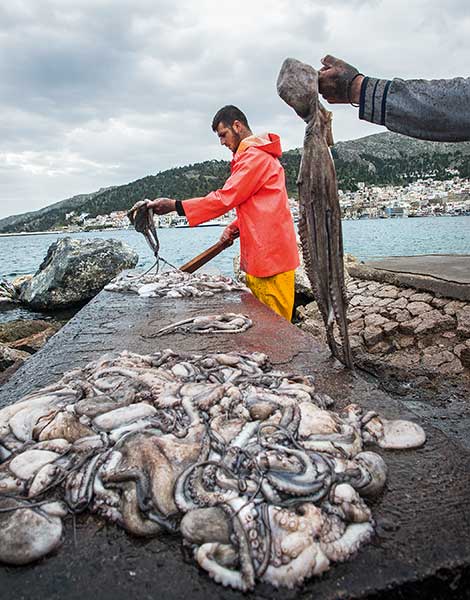
© Clairy Moustafellou
Joyful sweets
The customs and traditions of each island often involve particular sweets, especially when it comes to joyful occasions. The star on Symi is akoumia, a kind of doughnut made with boiled rice and sprinkled with rose water, served at New Year’s as part of a ritual to bring luck. At weddings and baptisms, the people of Rhodes serve melekouni, a sesame and thyme honey snap enriched with almonds and citrus zest. On Kastelorizo, these occasions are celebrated with katoumaria, small pies dusted with cinnamon, clove and sugar. The wedding sweet on Leros is the pougi pie, with intense mandarin flavors; the fruit is abundant on the island.
In general, apart from sweet preserves, like the wonderful candied cherry tomatoes of Kos, the sweets of the Dodecanese are centered on recipes using flour, butter and spices – ingredients that were always readily available in all households.

